![]()
![]()
![]()
Introduction
We are actively developing sensors for atmospheric trace gases such as hydrogen sulfide (H2S) or sulfur dioxide (SO2). These gases are naturally released into the atmosphere during volcanic eruptions, by rock weathering, and to some extent by bacteria. Abnormally high concentrations of H2S and SO2 are observed downwind from coal power plants and sour gas wells. H2S and SO2 are extremely toxic, and their presence is linked to acid rain and diminished air quality. Both gases exhibit strong absorption in the mid-infrared.
Instrumentation
Currently, we are constructing a Mid-IR Diode Laser Spectrometer for the purpose of real-time monitoring of atmospheric trace gases. We are using tunable diode lasers (TDLs) as the source of infrared radiation. We are employing a Laser Analytics L5736 liquid nitrogen coolhead. a parabolic mirror is used to collect the laser output (Figure 1). As shown in Figure 2, the laser beam is sent through a 92/8 beam splitter (Oriel 37400). The minor part of the beam is passed through a Ge crystal etalon (Laser Analytics L5940) and focussed through a CaF2 lens (Janos Technology) onto the red InSb detector (Infrared Associates). The major part of the beam is focussed into a low pressure (Edwards CR160/700 diffusion pump) chamber containing a Herriott-type multipass cell (see Figure 3), returns and is focussed onto the violet InSb detector (Laser Components L5911). The instrument is software-controlled via a Laser Components L5830 control unit (Figure 4).
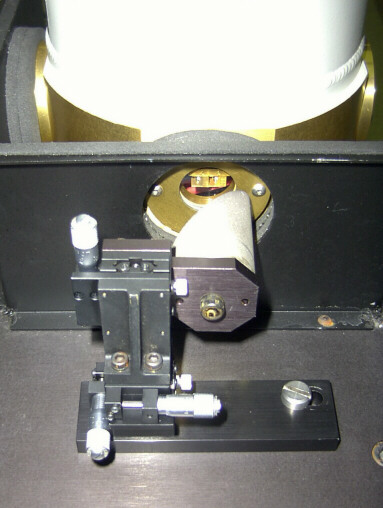
|
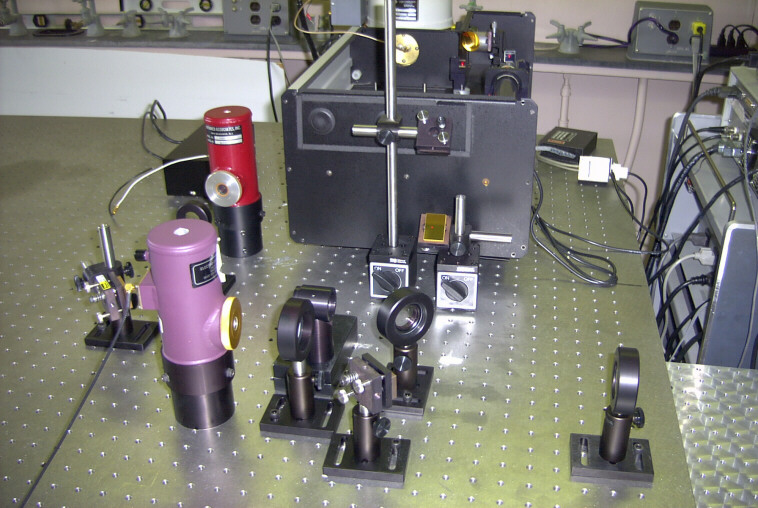
|
|
Figure 1 |
Figure 2 |
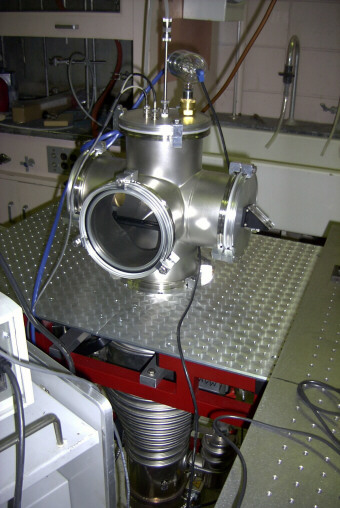
|
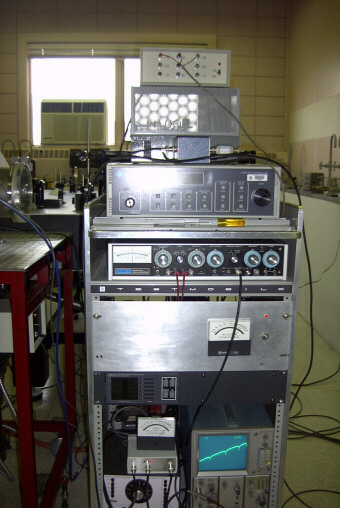
|
|
Figure 3 |
Figure 4 |
The control software, which was written in Delphi, consists of three parts: The Laser Controller (Figure 5), the Data Acquisition (Figure 6), and a wave form generating program (Figure 7).
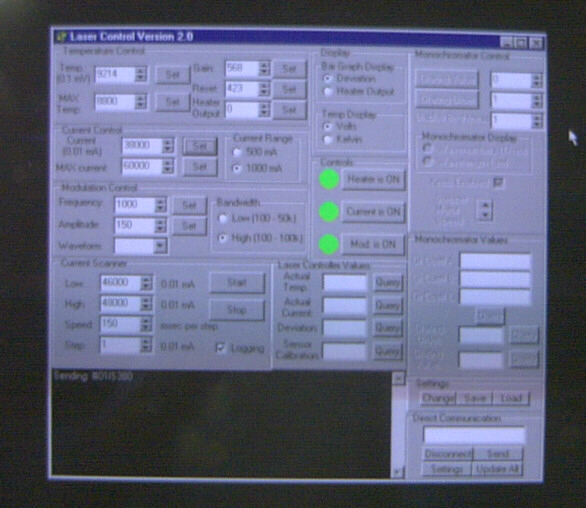 |
Figure 5 |
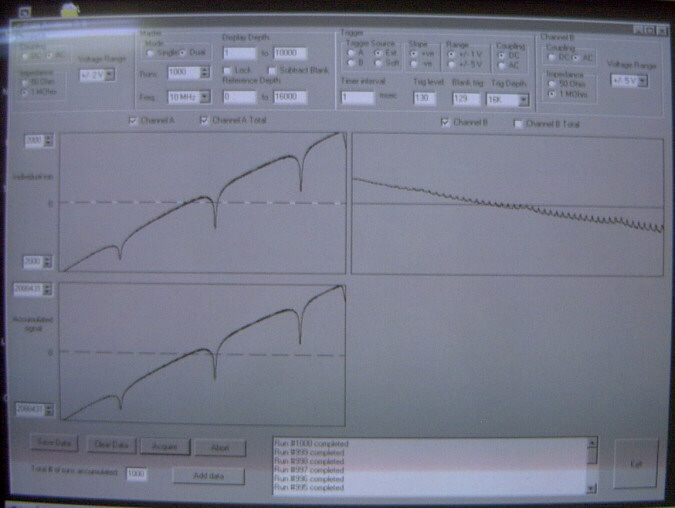 |
Figure 6 |
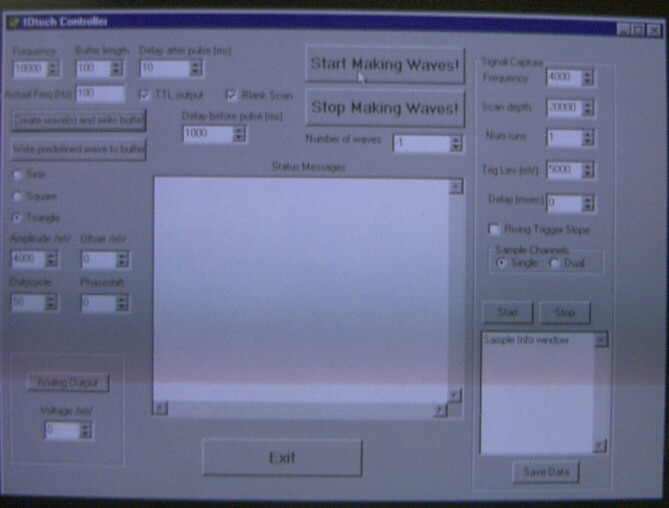 |
Figure 7 |
Collaborators
This project is done in collaboration with Dr. William Arie van Wijngaarden. William’s graduate student Johnathon Walls spent two one-month periods in our laboratory, during which he has written much of the control software.
Thanks to all!
Links
Below is a (by no means complete) list of sites with useful information related to this project. Check them out!
- Hitran. An atmospheric spectroscopy database. Very useful for simulations!
- AIDA. a list of scientists active in the field of aerosols and/or atmospheric chemistry.
- JPL Atmospheric Laser Spectroscopy Group. Going to Mars and beyond...
- The Atmospheric Sciences Technical Group of the Pacific Northwest National Laboratory. Very versatile. Check out the site of the Environmental Molecular Sciences Laboratory (EMSL) in particular.
- The Centre for Atmospheric Chemistry at York University.
- Nobel prize winners F. Sherwood Rowland and Robert F. Curl.
![]()
![]()